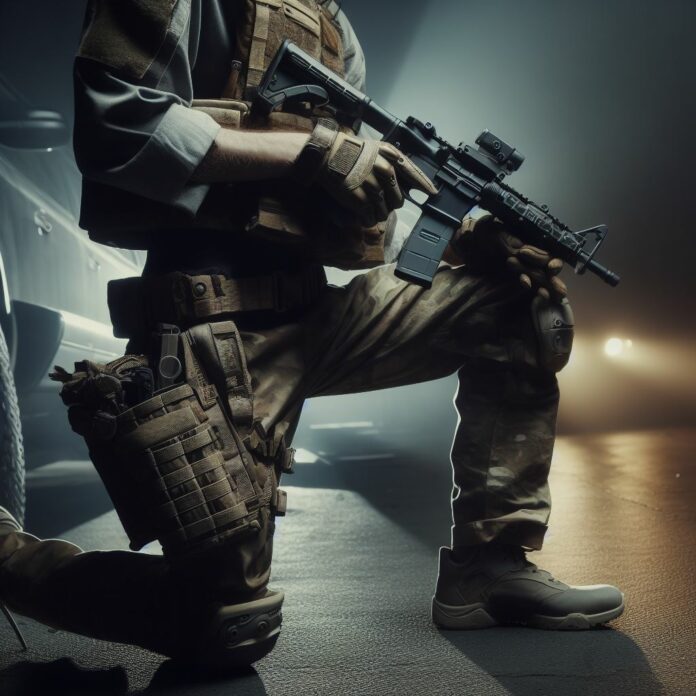Drop leg holsters are a popular choice among firearm enthusiasts and professionals, offering convenience and accessibility. In this article, we will explore the uses, benefits, and misconceptions surrounding drop leg holsters.
A drop leg holster is a type of holster that is attached to a thigh rig, providing a secure and easily accessible location to carry a firearm. Unlike other holsters that are worn on the waist or chest, a drop leg holster hangs off the thigh, allowing for quick and easy drawing of the weapon.
The use of a drop leg holster offers several advantages over other holsters. First and foremost, it provides a comfortable and secure way to carry a firearm, allowing for ease of movement and accessibility. Drop leg holsters are highly versatile and can be used in various situations, making them popular among law enforcement officers, military personnel, and outdoor enthusiasts.
Understanding how a drop leg holster works is essential for proper usage. The holster consists of several key components, including a holster platform, stabilizing straps, and adjustment buckles. Proper attachment and adjustment of the holster are crucial to ensure a secure fit and proper weight distribution. We will delve into the details of these components and the attachment process in the following sections.
While drop leg holsters offer many benefits, they may not be suitable for everyone. Factors such as body type, physical limitations, and the specific requirements of the situation should be considered before opting for a drop leg holster. We will explore these factors and provide guidance on determining if a drop leg holster is the right choice for you.
Lastly, there are a few common misconceptions surrounding drop leg holsters that need to be addressed. Some believe that drop leg holsters are uncomfortable, but with proper adjustment and choosing the right holster, comfort can be achieved. Another misconception is that drop leg holsters are only suited for tactical purposes, whereas they can also be used for recreational shooting, competition, and everyday carry.
By understanding the uses, benefits, and proper usage of drop leg holsters, you can make an informed decision on whether this type of holster is right for you and your specific needs.
What is a Drop Leg Holster?
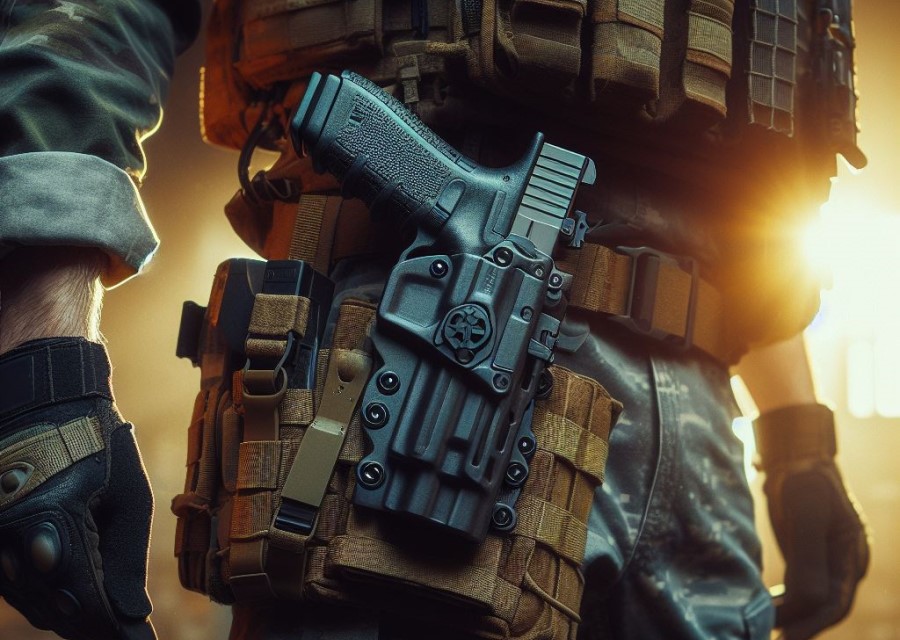
A drop leg holster, also known as a thigh holster, is a specialized type of holster that is specifically designed to be worn on the thigh. This particular holster is highly popular among military personnel, law enforcement officers, and enthusiastic individuals who are interested in tactical activities.
The primary purpose of a drop leg holster is to securely carry a firearm while ensuring quick and easy access to it whenever needed. Its convenience and versatility make it highly favored in a wide range of situations.
One of the key advantages of using a drop leg holster is the enhanced comfort and natural drawing motion it provides. The holster is attached to a drop leg platform through the use of straps or buckles, enabling the weight of the firearm to be evenly distributed.
This even distribution significantly reduces strain on the hip or waist area, thus allowing for a more comfortable carrying experience. This feature makes the drop leg holster particularly ideal for activities that require a high level of mobility, as well as for situations where wearing a tactical vest or other gear restricts access to the waist area.
Moreover, a drop leg holster offers a tactical advantage by keeping the firearm in a readily accessible position.
This strategic placement ensures that the user can swiftly and easily draw their weapon without the need to reach across their body or maneuver other gear out of the way.
Additionally, the drop leg holster securely holds the firearm in place during physical activities or when seated, preventing any unwanted movement or displacement.
How is a Drop Leg Holster Different from Other Holsters?
When comparing a drop leg holster to other holsters, there are several key differences to consider:
- Placement: A drop leg holster is worn on the thigh, while other holsters are typically worn on the hip or waistband.
- Draw Stroke: With a drop leg holster, the draw stroke is elongated, meaning it takes longer to access the firearm compared to other holsters.
- Security: Drop leg holsters usually have multiple points of contact, such as thigh straps and leg straps, to ensure the firearm is held securely. Other holsters may rely solely on friction or a belt loop.
- Comfort: Some people find drop leg holsters uncomfortable, especially if the leg straps are too tight or if there is excessive movement or wobbling while walking or running.
- Use Cases: Drop leg holsters are commonly used in tactical scenarios or when wearing body armor, as they help lower the bulk on the waist and provide freedom of movement. Other holsters may be more suitable for concealed carry or everyday use.
Fact: Did you know that drop leg holsters were used by the U.S. Calvary during the western expansion in the 19th century?
Why Use a Drop Leg Holster?
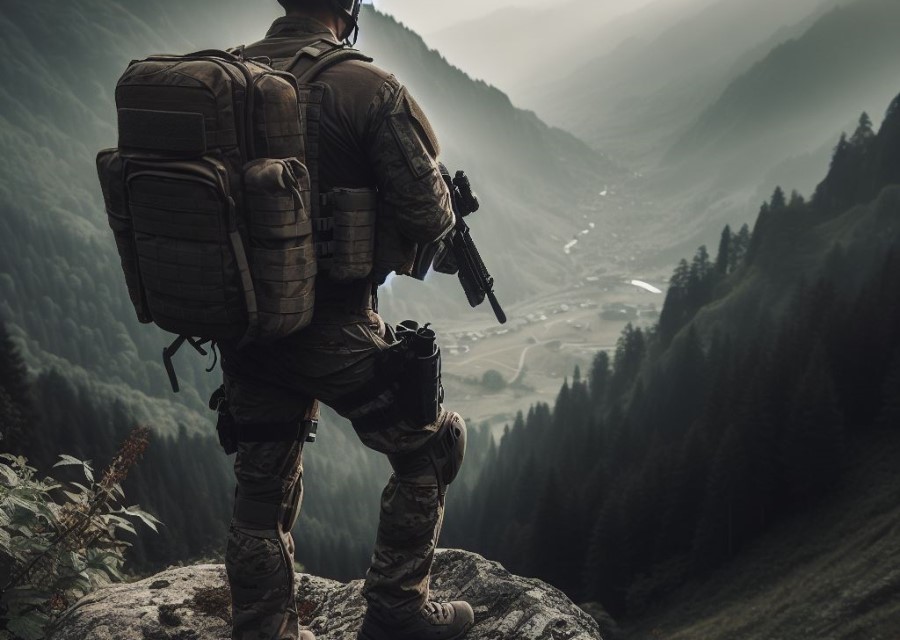
When it comes to using a drop leg holster, you might wonder why it’s even worth considering. Well, let me tell you: this section will uncover the reasons why using a drop leg holster can be a game-changer.
From the various benefits it offers to the specific use cases where it shines, get ready to explore the practical and tactical advantages of this versatile gear. So, holster up and let’s dive right in!
Benefits of Drop Leg Holster
The benefits of a drop leg holster, such as increased accessibility, freedom of movement, and versatility, are numerous.
- Increased accessibility: One of the major advantages of a drop leg holster is that it allows for easy and quick access to your firearm. Positioned at your hip, it enables a seamless and efficient draw, which is crucial in tactical situations or when a rapid response is vital.
- Freedom of movement: With a drop leg holster securely attached to your leg, you can enjoy enhanced mobility and flexibility. By freeing up your waist, it provides greater freedom to engage in activities like hiking, attending sporting events, or going on hunting trips.
- Versatility: Another notable feature of a drop leg holster is its adaptability. It can be adjusted to suit your body type and personal preferences, making it comfortable to wear. Furthermore, it can be worn on either leg and can accommodate various firearm sizes. Some models even offer additional compartments or pouches, providing storage space for extra magazines, cell phones, or other essential items.
Specific Use Cases for Drop Leg Holster
A drop leg holster offers several specific use cases that make it beneficial in certain situations. These specific use cases for a drop leg holster include:
- Tactical scenarios: Drop leg holsters are commonly used by military and law enforcement personnel in tactical situations where quick and easy access to a firearm is crucial. They provide a secure and easily accessible option for holding the firearm during these scenarios.
- Open carrying: When openly carrying a firearm, a drop leg holster can be a great choice. It provides a secure and easily accessible option for holding the firearm and ensures that it is within reach whenever needed.
- Freedom of movement: In activities such as hunting trips or outdoor adventures, a drop leg holster allows for greater freedom of movement. It securely and comfortably attaches the firearm to the leg, ensuring that it doesn’t hinder your mobility.
- Clearing an armored vest/plate carrier: A drop leg holster is ideal for situations where the wearer is donning body armor. It allows for easy access to the firearm by positioning it lower on the body, avoiding any interference from the armor.
- Concealed carry with certain clothing: A drop leg holster can also be a suitable option for concealed carry in specific cases. For instance, when wearing clothing that may hamper the draw from a traditional waistband holster, such as a dress or a jacket with a long coat tail.
By considering these specific use cases, individuals can assess whether a drop leg holster is suitable for their needs and preferences.
It is crucial to choose the appropriate gear that adapts to the specific situation and provides the necessary functionality for a safe and efficient draw of the firearm.
How Does a Drop Leg Holster Work?
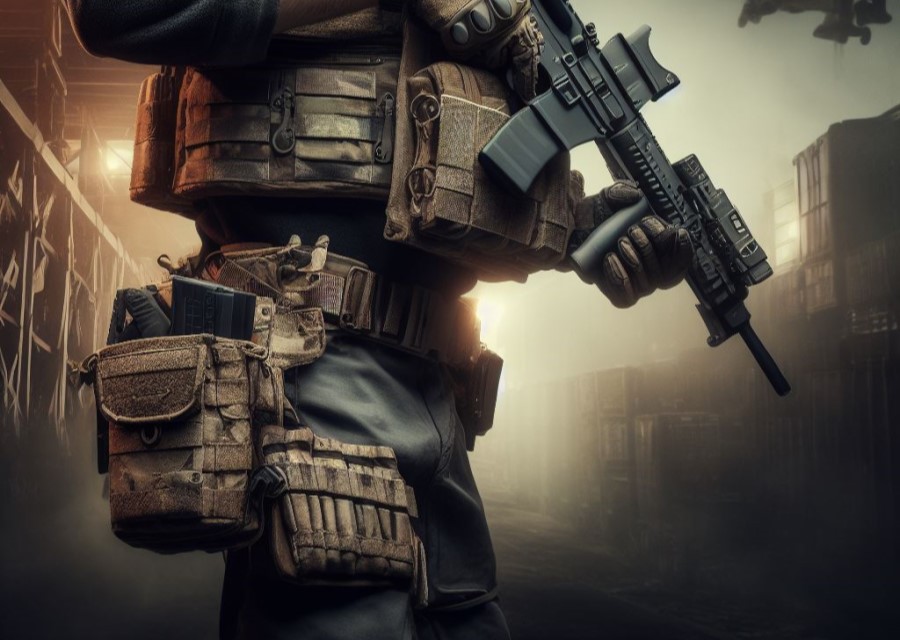
A drop leg holster is designed to securely hold a handgun on the thigh, allowing for quick and easy access. It consists of a holster attached to a leg strap that is fastened around the thigh. The holster is typically positioned on the outside of the dominant leg, allowing for a natural drawing motion.
To use a drop leg holster, the user adjusts the strap to ensure a secure fit and places the handgun inside the holster. The firearm is held in place by friction or a retention device. When needed, the user can quickly and smoothly draw the weapon by grasping the grip and pulling it upward and out of the holster.
Drop leg holsters are commonly used by law enforcement, military personnel, and civilian shooters who require a convenient and accessible way to carry their firearms.
A police officer in a high-risk situation found the functionality of his drop leg holster invaluable. When responding to a robbery in progress, he needed to draw his firearm quickly and efficiently to neutralize the threat.
Thanks to the design of his drop leg holster, he was able to easily access his weapon and successfully apprehend the suspect, ensuring the safety of himself and those around him. The effectiveness and ease of use of the drop leg holster undoubtedly played a crucial role in the officer’s ability to respond effectively to the dangerous situation.
Components of a Drop Leg Holster
The components of a drop leg holster are essential for its functionality.
- The thigh strap plays a crucial role in securing the holster to the thigh, providing stability, and keeping it in place during movement.
- To enhance stability and prevent any shifting or bouncing, two leg straps are incorporated into the design.
- A cloth segment acts as a connector between the two leg straps, preventing any uncomfortable rubbing against the leg.
- Leather thongs are used to attach the holster to either the belt or the waistband of the pants, ensuring proper placement.
Pro-tip: When setting up a drop leg holster, it is vital to adjust the straps and thongs to achieve the closest possible fit to your leg. This adjustment ensures easy and quick access to your firearm while keeping the holster securely in place.
How to Attach and Adjust a Drop Leg Holster?
If you want to know how to attach and adjust a drop leg holster, follow these simple steps:
- First, lay out your drop leg holster and make sure all the components are present.
- Put on the holster and securely fasten it around your thigh using the provided thigh straps.
- Make sure the thigh straps are tightened securely, but remember not to make them too tight to cause any discomfort or restrict your movement.
- Adjust the height of the holster by sliding it up or down on the thigh strap until you find a comfortable and easily accessible position.
- Ensure that the holster is positioned in a way that allows for a smooth and efficient draw stroke.
- Check the fit of the holster by inserting your handgun and ensuring that it is held securely and properly.
- If necessary, you can modify the holster to better accommodate your body type or specific preferences, such as adjusting the angle or tension.
- Once the holster is properly adjusted and secured, test its stability by moving around and making sure it does not wobble.
When attaching and adjusting a drop leg holster, remember the importance of finding the closest possible fit for your body type and needs. Keep in mind that the main purpose of a drop leg holster is to provide freedom of movement and easy access to your firearm, especially in tactical scenarios or situations where a lower position is preferred.
Is a Drop Leg Holster Suitable for Everyone?
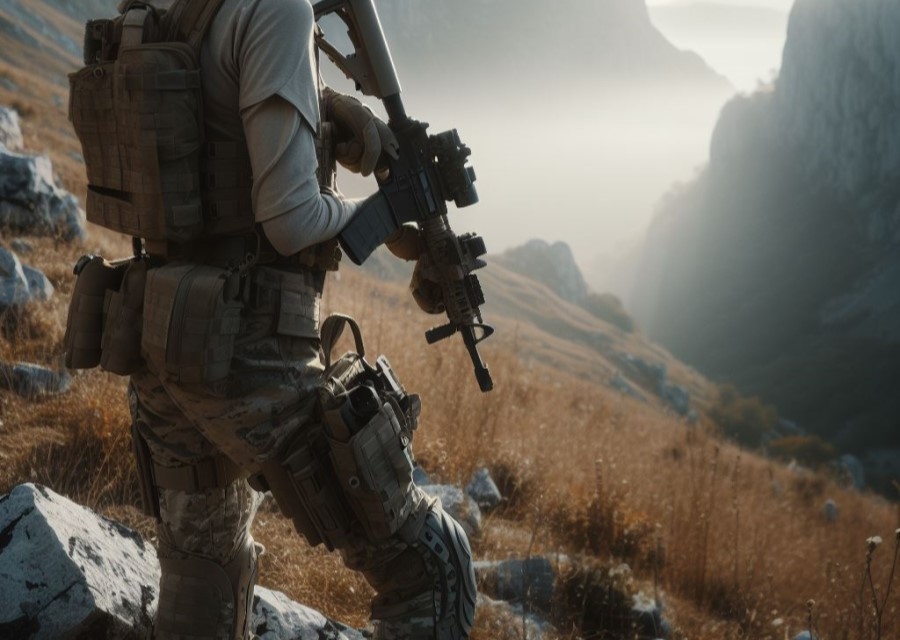
Are drop leg holsters a one-size-fits-all solution? Let’s explore whether this type of holster is suitable for everyone. We’ll uncover the factors that should be taken into consideration before using a drop leg holster, ensuring you make an informed decision. So, buckle up and get ready to delve into the world of drop leg holsters to determine if they are the right choice for you.
Factors to Consider Before Using a Drop Leg Holster
Before using a drop leg holster, it is important to consider the following factors:
- Fit and Comfort: Ensure that the drop leg holster is the appropriate size range for your body type. It should be cinched tight to hold securely but not so tight that it causes discomfort or restricts movement.
- Accessibility: Consider how easily and quickly you can draw your firearm from the drop leg holster. It should allow for a fast and smooth draw stroke to enhance proficiency in tactical scenarios.
- Stability: Check that the drop leg holster is secure and does not wobble as you move. Loose leg straps can impede your draw and make the holster less reliable.
- Concealment: Determine whether you need or want the drop leg holster to be concealed or open carrying. For concealed carry, options such as appendix carry or belt-mounted holsters may be more suitable.
- Functionality: Assess whether the drop leg holster meets your specific needs. Consider factors such as gear selection, the ability to clear an armored vest or plate carrier, and the freedom of movement it provides.
- Practicality: Evaluate whether the drop leg holster is practical for your intended use. It should not interfere with other equipment, such as a duty battle belt or body armor, and should not cause excessive bulk or discomfort.
Fact: The use of drop leg holsters gained prominence during the Western expansion in the United States, where they allowed quick access to firearms while on horseback.
Common Misconceptions About Drop Leg Holsters
Commonly misunderstood and subject to speculation, let’s debunk some misconceptions surrounding drop leg holsters.
Brace yourself to uncover the truth behind these myths: From the discomfort argument to their perceived limited applicability, we’ll dive headfirst into unraveling the reality behind these fallacies.
Get ready to be surprised as we explore the facts surrounding drop leg holsters, separating truth from fiction.
Myth 1: Drop Leg Holsters are Uncomfortable
- Drop leg holsters are often perceived as uncomfortable due to their position on the thigh.
- However, discomfort can be minimized by choosing a properly fitting holster and making adjustments to ensure a secure fit.
- Some people may find that a drop leg holster requires a period of adjustment before it feels comfortable.
- It is important to note that discomfort can also arise from improper use or setup of the holster.
- By following proper techniques and adjusting the holster to fit one’s body, it can be worn comfortably for extended periods.
- The design and materials used in modern drop leg holsters also contribute to comfort, with features such as padding or breathable fabrics.
- It is essential to select a drop leg holster that is compatible with the user’s body type and preferences.
Myth 2: Drop Leg Holsters are Only for Tactical Purposes
Drop leg holsters are not only for tactical purposes, but they are also versatile and suitable for various scenarios.
Drop leg holsters can be used by law enforcement officers and military personnel for tactical operations and quick access to their firearm.
However, drop leg holsters are also favored by outdoor enthusiasts, such as hunters and hikers, who may need easy access to their firearms while navigating rugged terrain.
For individuals with jobs that require them to wear body armor, a drop leg holster can provide a comfortable and accessible solution for carrying their firearm.
Some people may choose to wear a drop leg holster for personal protection purposes, allowing them to have their firearm within reach while maintaining freedom of movement.
Pro-tip: When using a drop leg holster for non-tactical purposes, make sure to adjust the holster to a position where it doesn’t impede your draw or wobble as you move. This will ensure both comfort and efficiency when accessing your firearm.
Frequently Asked Questions
What is a drop leg holster used for?
A drop leg holster is used to lower the bulk of a handgun to clear an armored vest/plate carrier or a hip belt of a backpack. It is also used when wearing a repelling harness.
Why have drop leg holsters gained prominence among police forces and militaries?
Drop leg holsters have gained popularity among police forces and militaries because they allow for a cleaner draw stroke when wearing bulky gear or body armor. They also make it easier to draw from a seated position and for individuals with longer arms than torso.
What are the considerations when using a drop leg holster?
When using a drop leg holster, it is important to wear a stiff belt to prevent sagging. The mouth of the holster should sit no lower than the top of the pants pocket, and the thigh straps should be worn high on the leg to prevent movement without restricting blood flow. It is also recommended to use a holster with a retention device to account for the movement the gun will go through during daily tasks or strenuous activities.
Why are drop leg holsters more difficult to find in local gun shops?
Drop leg holsters require multiple components to complete, including a custom holster, a thigh strap, a ‘backer’ for the holster, and a cloth segment to align everything properly. Many local gun shops do not cater to this style of carry due to the complexity of the components needed.
What are the advantages of using a drop leg holster?
The advantages of using a drop leg holster include freeing up waist space, preventing gear or hands from hitting the sidearm when accessing items in pockets or backpacks, providing freedom of movement, and making drawing the sidearm easier as it is positioned lower and does not require a high draw-stroke.
How should a drop leg holster be properly set up?
To set up a drop leg holster, start by attaching the belt loops to the waist and fastening the leg straps. Ensure the holster is set at the correct height on the upper thigh for quick access to the gun. Adjust the thigh straps to a firm but comfortable fit. Once the settings are dialed in, the drop leg holster is ready to be used.

